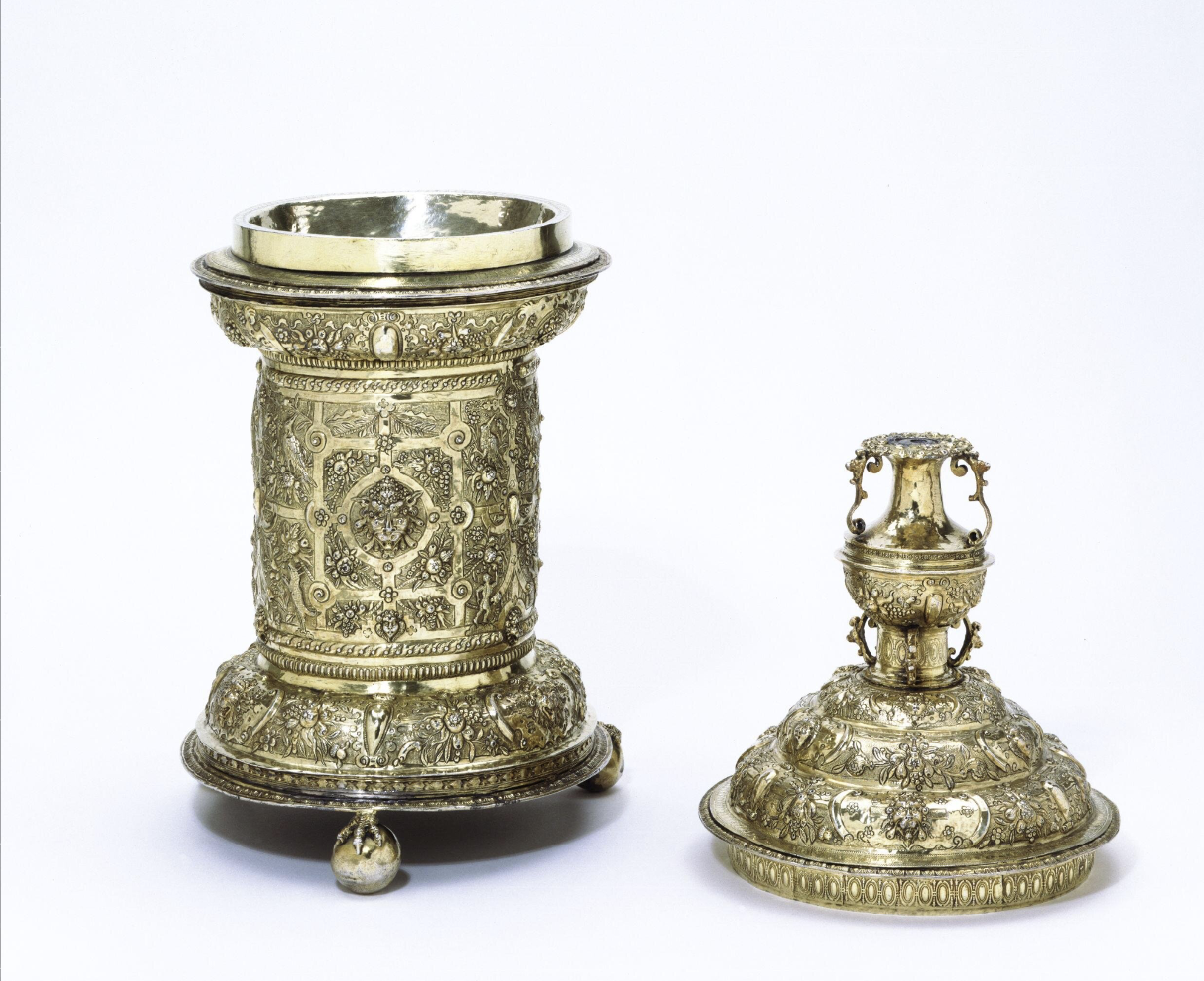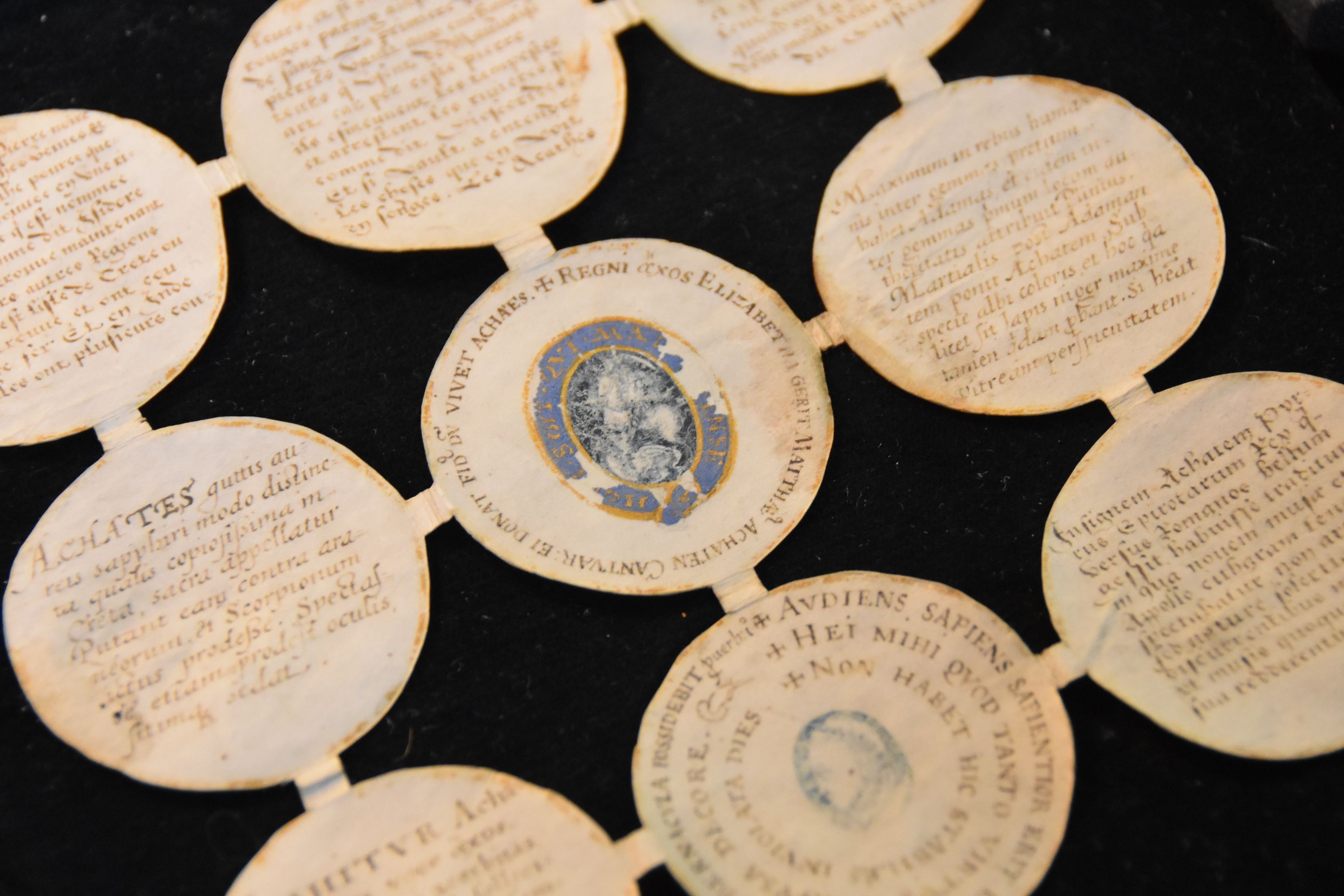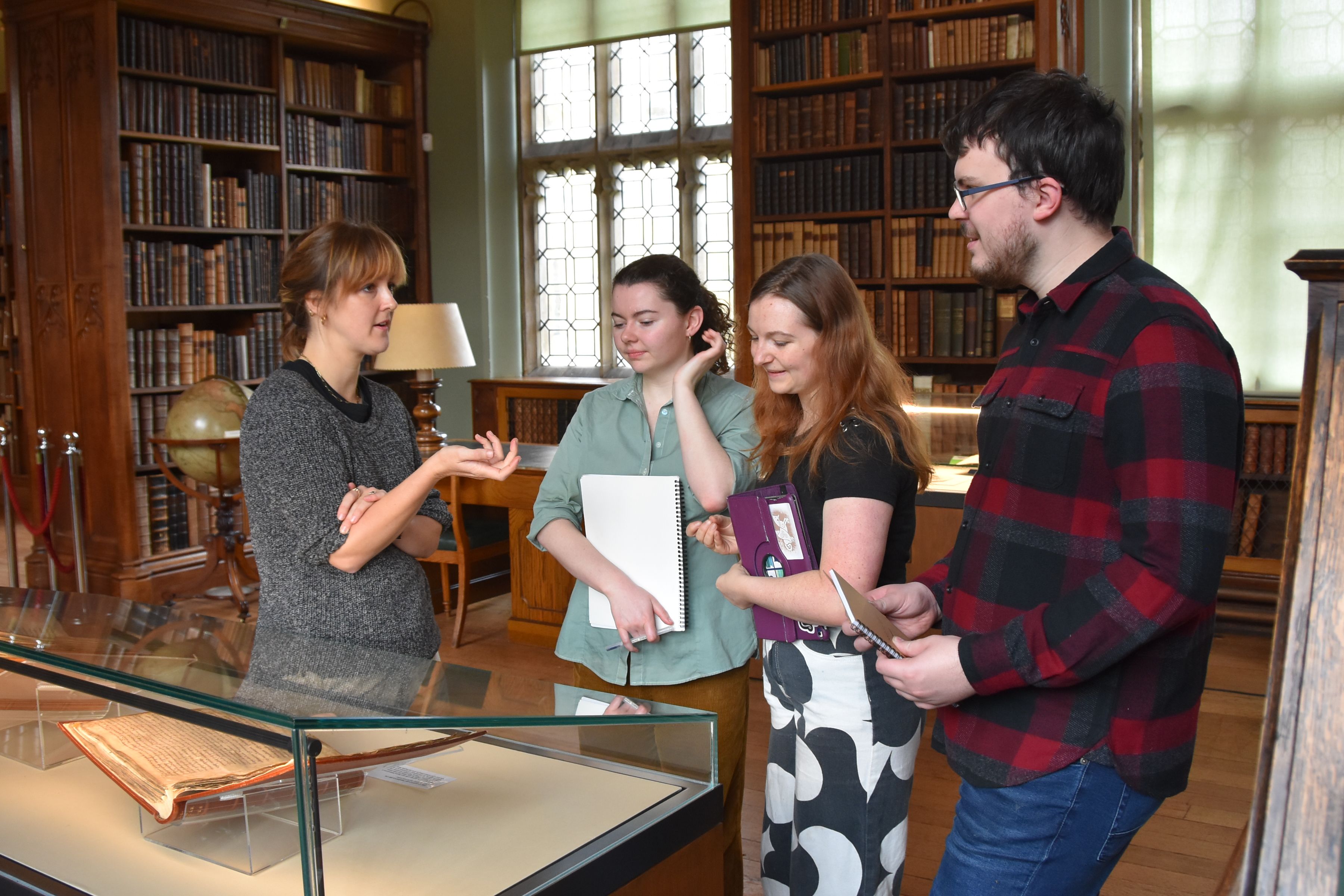A gift for a Queen
The Parker Library's latest acquisition is very much at home in the library founded by its creator.

The Parker Library has acquired a manuscript of nine roundels that was a gift given by Archbishop Matthew Parker to Queen Elizabeth I in the 16th century. The manuscript was in private hands until 2021 when it was sold at auction by Sotheby’s; however the overseas purchaser was denied an export license due to the intervention of the Department for Digital, Culture, Media and Sports on the advice of the Reviewing Committee on the Export Works of Art and Objects of Cultural Interest (RCEWA). If a cultural object due to leave the country meets certain criteria (the Waverly Criteria) it is considered of of national importance. Any item considered too important to leave the UK can be placed under temporary export deferral which gives a final opportunity for institutions in the UK the chance to raise the money, purchase the item and retain it in the UK for the public to enjoy. The Committee felt that the roundel manuscript would have enormous research value if it were to remain in the UK, describing it as "exceptionally rare and potentially a unique example of its kind, in a novel and highly unusual format". The Parker Library made a serious expression of interest to acquire the manuscript and the owner accepted this offer.
The Parker Library is where Archbishop Parker left the vast majority of his manuscripts, printed books and silver to this College where he had been student and Master. Over 550 manuscripts and over 1,000 printed books and many of Parker's personal papers have been in the careful custody of the College for nearly 450 years and form a core part of the College’s identity.
The roundels date to 1573 and were given to Queen Elizabeth when she visited the Archbishop at his palace in Canterbury during one of her annual summer processions. Elizabeth and Parker were on good terms. She had known him from childhood. He had been Chaplain to her mother, Anne Boleyn, and was recommended by her father Henry VIII to become Master of Corpus Christi College. In December 1559 the Queen consecrated Matthew Parker as the first Archbishop of Canterbury for the new Church of England.
The occasion of this visit was of special significance as it took place over the Queen's 40th birthday. Parker duly threw a great feast with entertainment for the Queen and presented her with a lavish golden standing salt cellar. Salt itself was a precious commodity in 16th-century England and the gift indicated prestige and rank. Inside the salt were placed two intaglio agate gems - one depicting George and the Dragon within the Garter and the other a cameo of the Queen, along with golden Portuguese coins. To accompany this treasure, the roundels served as a sort of 'gift card'.
Two of the roundels are illustrated after the agate intaglios of George and the Dragon and the Queen's cameo. Surrounding the images are Latin phrases extolling learning and loyalty, and praising the beauty of her Majesty. Parker’s description of himself as the Queen’s ‘fidus Achates’ was carefully chosen to emphasise his devotion to the monarch and to strengthen his royal backing during a time of crisis for the Church. The remaining roundels describe in Latin and French the various qualities of agate, including its ability to repel scorpions and its value as a precious gem.
Much of this detail about agates had been drawn from books and manuscripts on natural history and medicine that Parker himself owned, including those by Pliny, Isidore of Seville and Dioscoridae - volumes that remain in the Library collection to this day.

Matthew Parker, former Master and Archbishop of Canterbury, depicted in the backplate of MS 582: the Statues of Corpus Christi College, Cambridge (1548-49). The RCEWA Committee describes Parker as "an extraordinary cultural figure" who is "one of the most important figures in library history in Britain".
Matthew Parker, former Master and Archbishop of Canterbury

The Queen left London during the summer months to see and be seen, and to escape the noxious conditions in the capital during the hot weather. Her visit to Canterbury coincided with her 40th birthday on 7 September. A Procession of Elizabeth Robert Peake (c1551–1619).
The Queen left London during the summer months to see and be seen, and to escape the noxious conditions in the capital during the hot weather. Her visit to Canterbury coincided with her 40th birthday on 7 September. A Procession of Elizabeth Robert Peake (c1551–1619).

The Mostyn Salt (c1586) is likely similar to the one presented by Parker to the Queen, which is now lost. A large ceremonial covered salt cellar, it would have been placed on the high table beside the host. Victoria & Albert Museum Metalwork Collection.
The Mostyn Salt (c1586) is likely similar to the one presented by Parker to the Queen, which is now lost. A large ceremonial covered salt cellar, it would have been placed on the high table beside the host. Victoria & Albert Museum Metalwork Collection.

The roundel manuscript is written on parchment and has nine sections, which would likely have been folded up and placed alongside Parker's gifts of gold and gems. The use of shell gold around the two miniatures indicate that the manuscript was intended to impress the Queen.
The roundel manuscript is written on parchment and has nine sections, which would likely have been folded up and placed alongside Parker's gifts of gold and gems. The use of shell gold around the two miniatures indicate that the manuscript was intended to impress the Queen.
This manuscript sits perfectly alongside Matthew Parker's books and manuscripts at Corpus. These reflect Parker’s intellectual and artistic research, his well-known interests in history and theology, and his less well-known interest in medicine and science.
The collection includes works on alchemy and on the natural world, including manuscripts and early printed books of the works of Pliny, Isidore of Seville and Dioscorides, the authors whose work is quoted on these roundels of this manuscript, as well as other texts which discuss the virtues of gems.
The several hands which can be identified in these roundels were also busy at work on the Parker Library collection, annotating, copying, and composing texts. Parker and his secretaries took a particular pleasure in being able to write in many different styles.
"As both an exceptionally rare and beautiful example of gift culture and a record of the lost gold salt cellar, the manuscript is of outstanding significance for the study of Elizabethan gift exchange. It reveals what was engraved on the salt cellar and provides illustrations of the agate jewels set into it. Not only does the manuscript takes us a step closer to the object itself, but crucially it has the potential to shed light on topics of significance in the broader cultural, political and religious context and in relation to Matthew Parker and Elizabeth I, both separately and jointly." - RCEWA
Like the other manuscripts, the roundels are kept in our physically secure and temperature- and humidity-controlled purpose-built manuscript storage. We intend to digitise it to join the rest of Parker’s manuscripts in our Parker Library on the Web digital collection, which gives full and free access to extremely high-quality images and research information concerning every one of Parker’s manuscripts. And of course the roundels will be available for study by visiting scholars and students, and during special exhibitions hosted by the Library.


